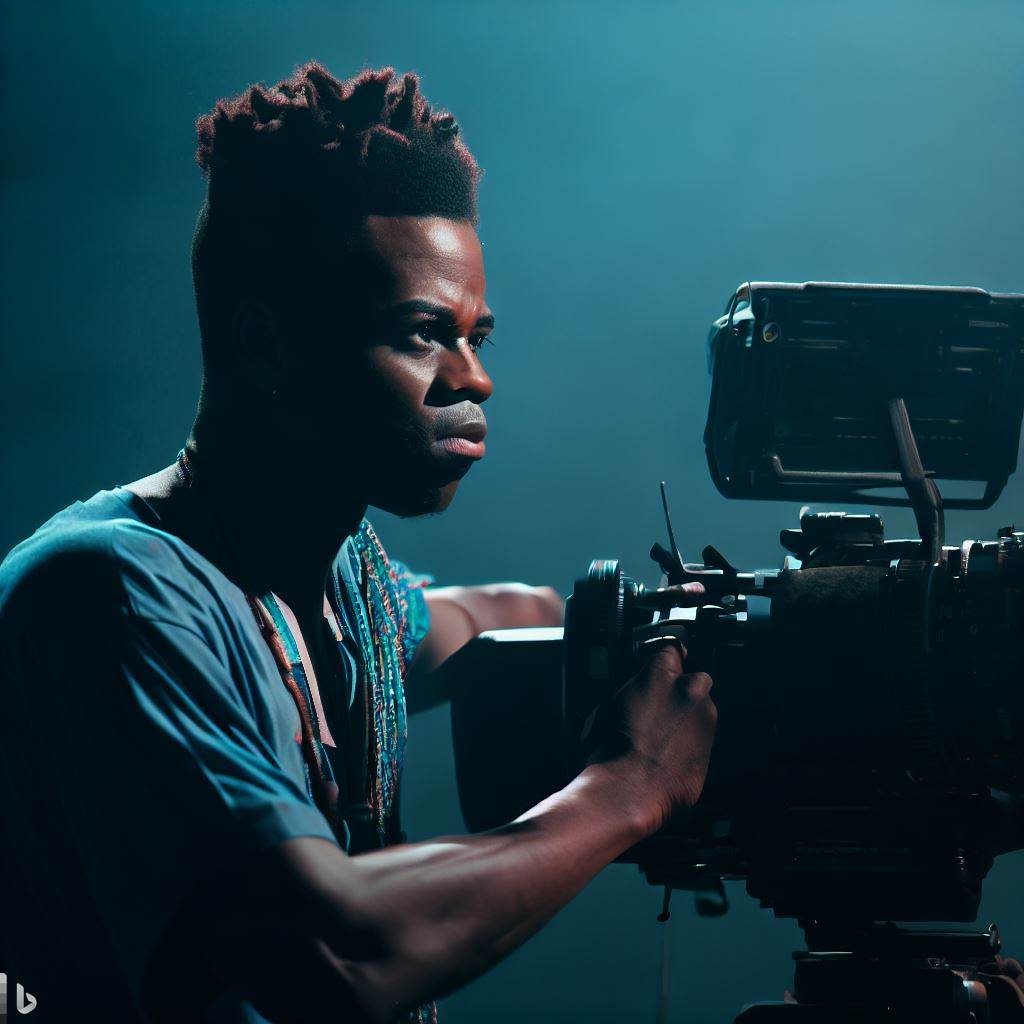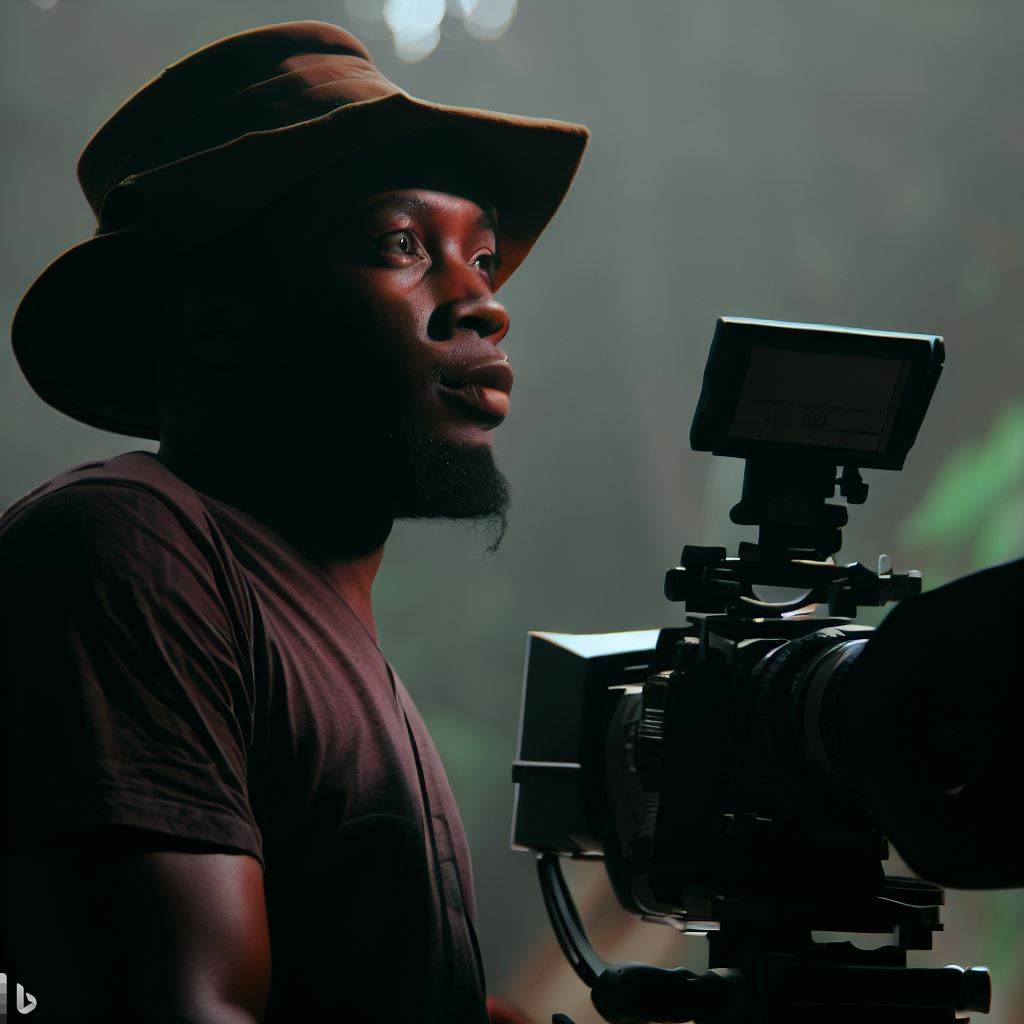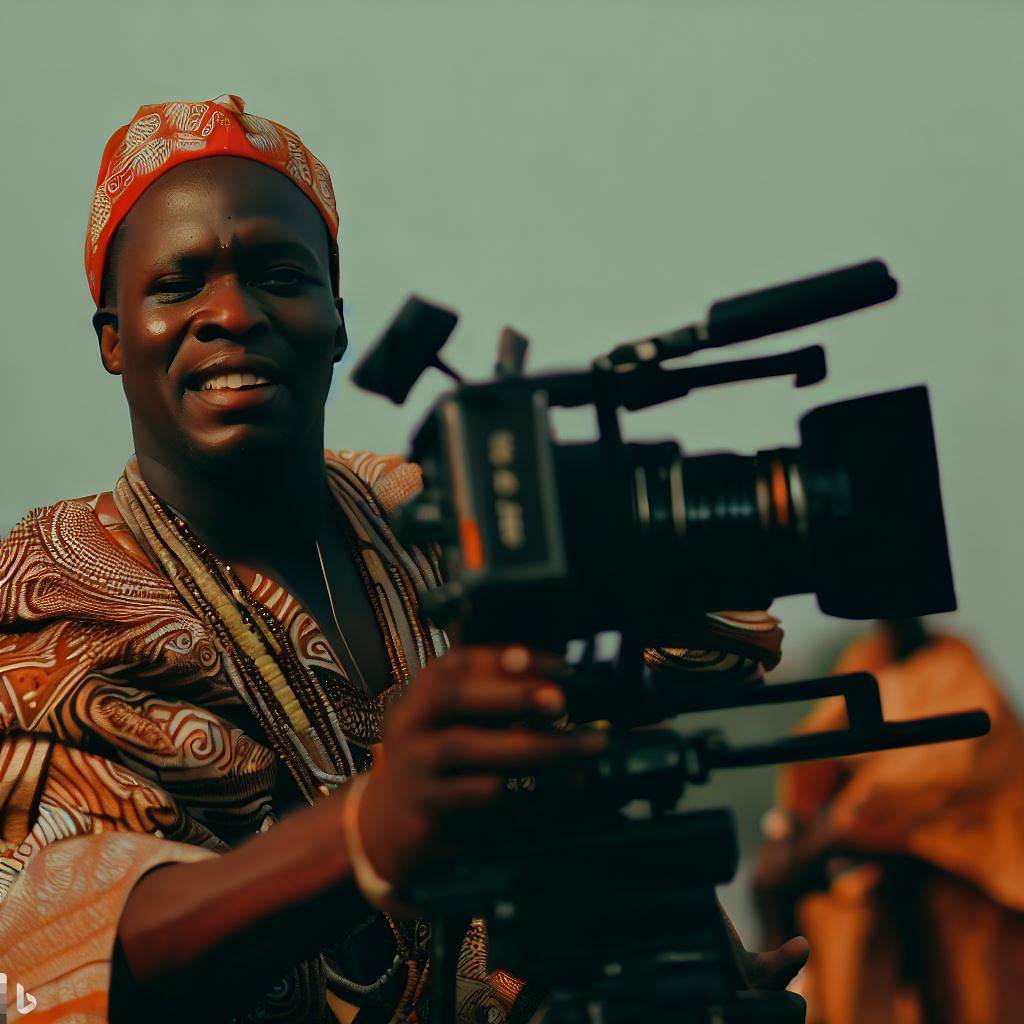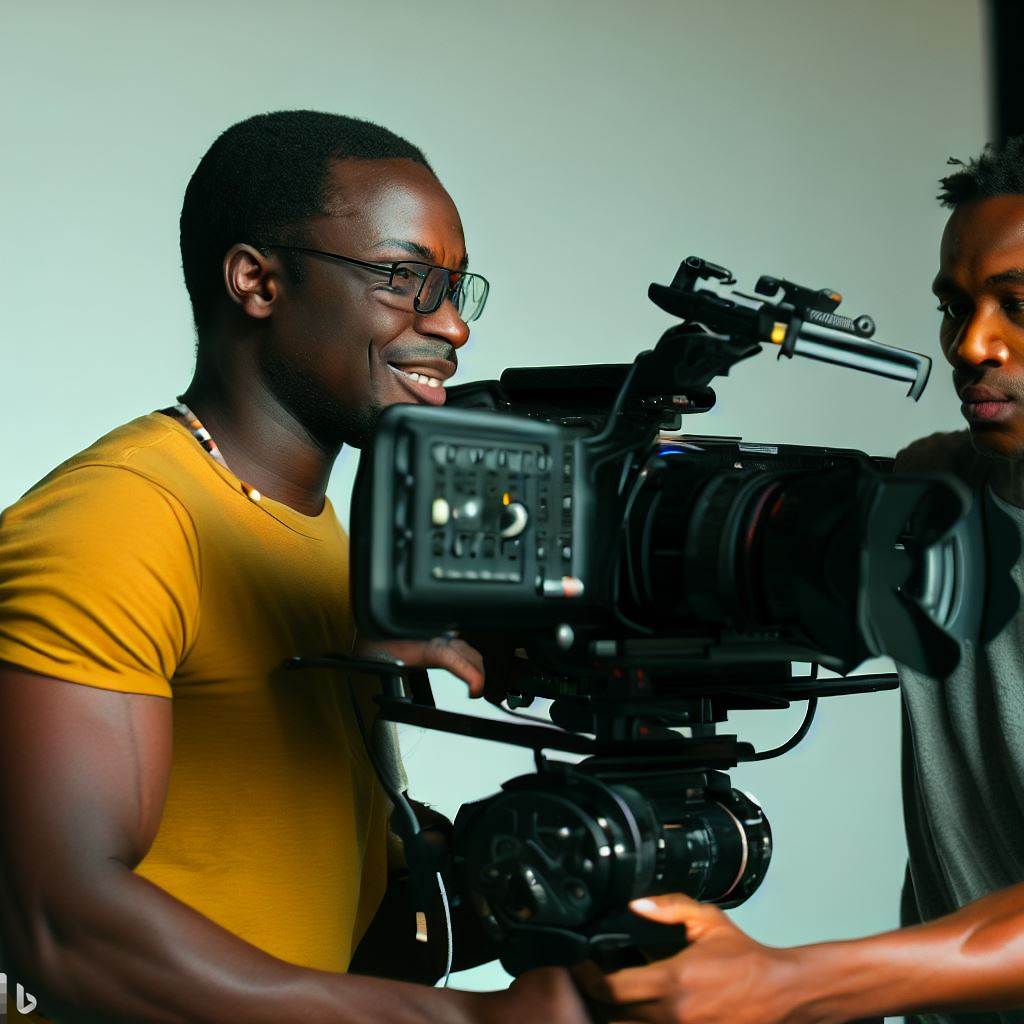Introduction
The Nigerian film industry, also known as Nollywood, is one of the largest globally. Exploring the Cinematography Styles in Nigerian Film
It has gained significant recognition for its prolific output and cultural impact.
This blog post aims to explore the influential cinematography styles employed in Nigerian films and their effects on storytelling and audience engagement.
By examining these styles, we can better understand the unique visual language of Nollywood and its contributions to the wider film industry.
The Role of Cinematography in Film
Cinematography and its importance in film-making
Cinematography is the art of capturing and recording images in film.
It plays a vital role in film-making as it creates the visual language of a movie.
How cinematography can enhance storytelling and impact audience emotions
Cinematography helps convey the story and evoke emotions in the audience.
- Setting the Tone: Cinematography sets the overall tone and mood of a film.
Through the use of lighting, color, and composition, cinematographers can create different atmospheres that align with the narrative.
For example, a horror film may use dark and shadowy lighting to create a sense of fear and suspense. - Enhancing Transitions: Cinematography aids in smooth transitions between scenes or shots.
Filmmakers use techniques such as cross-cutting, dissolve, or fade to seamlessly move from one location or time frame to another.
These transitions keep the audience engaged and help maintain the flow of the story. - Creating Depth: Cinematography adds depth to a film by utilizing various techniques like establishing shots, wide angles, and depth of field.
These techniques make the audience feel immersed in the cinematic world, allowing them to experience the story more vividly. - Visual Symbolism: Through cinematography, filmmakers can use visual symbols to convey deeper meanings and enhance storytelling.
For instance, the use of a specific color scheme or recurring visual motif can represent a character’s emotional journey or a thematic element in the narrative. - Conveying Emotions: Cinematography has the power to evoke strong emotions in the audience.
The use of close-ups or extreme long shots can create a sense of intimacy or isolation, respectively.
Additionally, camera movements like tracking or handheld shots can enhance the intensity of a scene and elicit specific emotional responses from the viewers.
Cinematography is a vital aspect of film-making that enhances storytelling, impacts audience emotions, and contributes to the overall visual language of a film.
With the use of various techniques and visual elements, cinematographers create a cinematic experience that captivates and resonates with viewers.
Read: Legal Aspects of Music Publishing in Nigeria
Evolution of Cinematography Styles in Nigerian Films
The Nigerian film industry, popularly known as Nollywood, has experienced a remarkable evolution in its cinematography techniques over the years.
This transformation has been influenced by various factors, including the industry’s early years, the transition from traditional styles to modern approaches, and international influences.
Early Years of the Nigerian Film Industry and its Cinematography Techniques
- In the early years of the Nigerian film industry, cinematography techniques were relatively simple.
- Low-budget productions limited the use of advanced equipment and specialized cinematography techniques.
- Most films were shot using basic cameras, resulting in a documentary-style aesthetic.
- The focus was primarily on storytelling rather than visual appeal.
- However, this simplicity gave rise to the raw and authentic charm that became a trademark of Nollywood films.
Transition from Traditional Styles to More Modern Approaches
- As the Nigerian film industry grew in popularity and revenue, the cinematography techniques also advanced.
- New technologies, such as digital cameras and editing software, allowed for more creative freedom.
- Filmmakers began experimenting with different camera angles, lighting techniques, and visual effects.
- The use of handheld cameras became popular, adding a sense of immediacy and intimacy to the films.
- Cinematographers started emphasizing the visual aesthetics, incorporating vibrant colors and dynamic compositions.
- This transition marked a significant shift from the documentary-style of the early years to more visually captivating films.
International Influences on Nigerian Cinematography
- The Nigerian film industry has not been isolated from international influences.
- Foreign films, particularly Hollywood productions, have played a vital role in shaping Nigerian cinematography.
- As filmmakers and cinematographers gained exposure to international films, they incorporated new techniques and styles.
- Western cinematography principles, such as the rule of thirds and proper lighting techniques, became prevalent.
- International collaborations between Nigerian and foreign filmmakers also contributed to the exchange of ideas and expertise.
- This cross-pollination has resulted in a fusion of styles, giving Nigerian films a unique blend of local and global aesthetics.
The cinematography styles in Nigerian films have evolved significantly since the early years of the industry.
Nollywood enriches its visual storytelling by embracing new technologies and international influences, progressing from simple to advanced techniques.
With each passing year, Nigerian films continue to push the boundaries of cinematography, captivating audiences both locally and internationally.
Read: Challenges Facing Music Publishers in Nigeria Today
Influential Cinematography Styles in Nigerian Films
1. Analyze the “Nollywood” style and its characteristics
Nollywood, as the Nigerian film industry is often referred to, has its own distinct cinematography style.
It is characterized by vibrant colors, fast-paced storytelling, and a focus on dramatic elements. The use of close-ups and exaggerated expressions is also common in Nollywood films.
This style aims to entertain and captivate the audience, often resulting in highly emotional and exaggerated scenes.
2. The influence of Western cinematography techniques on Nigerian films
Western cinematography techniques have had a significant impact on Nigerian films.
With the rise of Nollywood, filmmakers began to incorporate elements such as high-quality production values, advanced camera techniques, and creative lighting into their work.
This influence has helped to improve the overall visual appeal of Nigerian films and bring them closer to international standards.
3. Explore the influence of other global film industries on Nigerian cinematography
Nigerian cinematography has also been influenced by other global film industries.
For example, the Indian film industry, Bollywood, has inspired Nigerian filmmakers in terms of visual storytelling and song-and-dance sequences.
Hollywood, on the other hand, has influenced Nigerian films through its use of cinematic techniques, such as camera angles, special effects, and editing styles.
These influences have contributed to the evolution of Nigerian cinematography and its ability to attract a wider audience.
Nigerian cinematography has its own unique style, known as the “Nollywood” style, which is characterized by vibrant colors and dramatic elements.
However, the influence of Western cinematography techniques and other global film industries has played a significant role in shaping Nigerian films.
These influences have helped to improve the quality and visual appeal of Nigerian films, making them more appealing to a wider audience.
As the Nigerian film industry continues to grow, it is important to acknowledge and appreciate the diverse influences that have contributed to its success.
Read: Tools of the Trade: Essential Equipment for Nigerian Costume Designers

Breakthrough Films and their Cinematographic Innovations
There have been several notable Nigerian films that have pushed boundaries in cinematography, introducing innovative techniques and revolutionizing the industry.
These films have left a lasting impact on the Nigerian film industry and have received recognition and awards for their exceptional cinematographic achievements.
1. “The Figurine: Araromire” (2009)
- “The Figurine: Araromire” directed by Kunle Afolayan, showcased impressive cinematography through its use of color grading and visually stunning shots.
- It introduced a unique storytelling technique that seamlessly blended Nigerian mythology with contemporary themes.
- For its remarkable cinematography, the film won awards at the 2010 African Movie Academy Awards (AMAA), including Best Cinematography.
2. “Half of a Yellow Sun” (2013)
- “Half of a Yellow Sun” directed by Biyi Bandele, employed a combination of handheld camera techniques and aerial shots to capture the complexities of the Nigerian-Biafran War.
- The film’s cinematography effectively conveyed the tension, emotions, and historical context, contributing to its critical acclaim.
- It received nominations for Best Cinematography at the 2014 Africa Magic Viewers’ Choice Awards (AMVCA).
3. “October 1” (2014)
- “October 1” directed by Kunle Afolayan utilized advanced lighting techniques to create a film noir aesthetic, reminiscent of classic Hollywood detective dramas.
- The film’s cinematography successfully transported viewers to Nigeria in the 1960s, effectively enhancing the narrative’s atmosphere.
- “October 1” won the award for Best Cinematography at the 2015 AMVCA.
4. “The CEO” (2016)
- “The CEO” directed by Kunle Afolayan showcased stunning cinematography that captured the beauty and vibrancy of different African locations.
- The film employed aerial shots, tracking shots, and unique framing techniques to enhance the visual storytelling.
- It received nominations for Best Cinematography at the 2017 AMVCA.
Nigerian filmmakers’ immense talent and creativity, showcased in these breakthrough films, have elevated the cinematography standard in the industry.
Their innovative techniques and visual storytelling have inspired a new generation of filmmakers and propelled the industry onto the global stage.
Read: Animation Directing: Nigeria vs. The Global Scene
Challenges and Opportunities in Nigerian Cinematography
Nigerian cinematographers face numerous limitations within the industry.Cinematography Styles in Nigerian Film
However, there are also several opportunities for growth and improvement. Additionally, technology plays a significant role in advancing Nigerian cinematography.
1. Limitations Faced by Nigerian Cinematographers
- Lack of adequate funding often hinders the production of high-quality films in Nigeria.
- Insufficient training and education for cinematographers restrict their skills and creativity.
- Limited access to advanced equipment and technology impedes the production process.
- Inconsistent power supply poses a challenge in maintaining a smooth filming environment.
- Limited distribution channels and piracy issues reduce revenue generation for cinematographers.
2. Opportunities for Growth and Improvement
- Increasing recognition of the Nigerian film industry on the global stage opens doors for collaborations and investments.
- The rise of online streaming platforms provides a broader platform to showcase Nigerian films to a wider audience.
- Growing interest in African cinema among international filmmakers increases potential partnerships and co-productions.
- Government initiatives and support can boost funding opportunities and provide infrastructure for improved cinematography.
- Film festivals and competitions offer platforms for exposure, recognition, and networking within the industry.
3. Role of Technology in Advancing Nigerian Cinematography
- Digital filmmaking has revolutionized the Nigerian film industry, providing cost-effective options for production.
- Availability of high-quality cameras and equipment enables cinematographers to capture stunning visuals.
- Post-production software empowers cinematographers with greater control over editing and special effects.
- Online distribution platforms and social media allow filmmakers to independently reach a vast audience.
- Advancements in virtual reality (VR) and augmented reality (AR) technologies offer new creative possibilities for storytelling.
Nigerian cinematographers face challenges arising from limited funding, training, equipment access, power supply, and distribution channels.
Nevertheless, the Nigerian film industry provides numerous growth opportunities through global recognition, online platforms, partnerships, government support, and film festivals.|
Furthermore, technology plays a crucial role in advancing Nigerian cinematography by enabling digital filmmaking, providing advanced equipment, enhancing post-production capabilities, and expanding distribution channels.
With continued advancements and support, the Nigerian film industry has the potential to achieve greater heights and contribute significantly to the global cinematic landscape.
Conclusion
This blog post has highlighted the influential cinematography styles in the Nigerian film industry.
We have discussed the various techniques and approaches used by Nigerian filmmakers to enhance their storytelling.
Cinematography plays a significant role in the Nigerian film industry as it helps to create immersive experiences for viewers and brings stories to life.
It is a powerful tool that aids in capturing emotions, highlighting cultural nuances, and showcasing the beauty of Nigeria.
We encourage readers to explore and appreciate the diversity of cinematic styles in Nigerian films.
By doing so, they can gain a deeper understanding of the Nigerian culture and appreciate the creativity and talent of Nigerian filmmakers.
In summary, cinematography in the Nigerian film industry is a vital element that contributes to the success and impact of Nigerian films.
Through the use of various styles and techniques, filmmakers have the ability to captivate and engage audiences, ultimately portraying the richness and uniqueness of Nigerian cinema.




